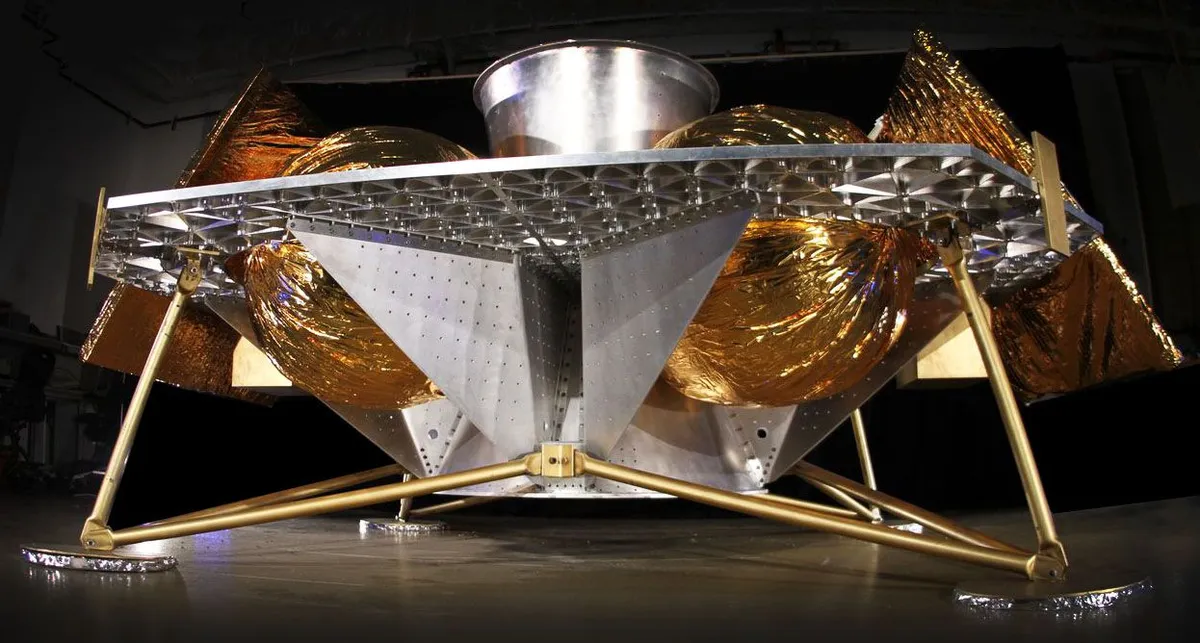
SpaceX's upcoming mission to the moon, along with the launch of its powerful triple-booster Falcon Heavy rocket, has been postponed to no earlier than July 2026. This delay impacts Astrobotic's Griffin-1 lunar lander, which is set to carry a mix of NASA and commercial payloads, including rovers developed by Astrobotic and Astrolab. Originally slated for a launch at the end of 2025, the mission will now miss that timeline, as confirmed by an update from Astrobotic on October 24.
The upcoming mission represents Astrobotic’s second attempt at a successful lunar landing. The first attempt, known as Peregrine Mission One, took place in January 2024 but unfortunately failed to reach the moon due to a propellant leak shortly after launch. Currently, Griffin is undergoing critical processes such as payload integration and software testing at Astrobotic's facility in Pennsylvania, where propulsion testing and avionics validations are actively taking place.
Both Griffin and Peregrine are being developed under NASA's Commercial Lunar Payload Services (CLPS) program, designed to fund private missions to the moon that deliver payloads in support of the Artemis program. This ambitious initiative aims to return astronauts to the lunar surface, furthering human exploration of space.
Initially, NASA had planned to include its Volatiles Investigating Polar Exploration Rover (VIPER) aboard the Griffin lander. However, this mission was canceled in 2024, prompting Astrobotic to repurpose the payload space for a commercial rover developed by Astrolab: the FLIP (FLEX Lunar Innovation Platform). Interestingly, VIPER has since been re-added to the mission roster of a Blue Origin lunar mission, which is targeted for 2027.
In addition to the FLIP rover, Griffin will also carry Astrobotic's own CubeRover and several smaller payloads. These include a plaque from the Nippon Travel Agency that will transmit messages collected from children in Japan to the moon, the Galactic Library aimed at preserving humanity, and the MoonBox capsule, which will deliver a variety of items from around the globe to the lunar surface, as detailed in Astrobotic’s update.
Astrobotic has reported significant progress in the assembly of Griffin's core structure. Key components such as thrusters, pressure tanks, solar panels, and payload ramps have been successfully fitted to the vehicle. The lander is now awaiting the installation of four propellant tanks, which are essential for preparing the vehicle for upcoming environmental acceptance testing. This testing will simulate various mission phases including launch, spaceflight, and lunar surface exploration.
Alongside these advancements, Astrobotic is also conducting engine qualification testing in preparation for final integration. NASA's CLPS program aims to stimulate the commercial lunar economy while providing the agency with access to affordable lunar delivery services. However, the program has faced scrutiny due to setbacks and early failures, such as the mishap with Peregrine and the challenges encountered by Intuitive Machines' landers. Astrobotic's ability to recover with the Griffin mission will be a pivotal test not only for the company but also for the overall success of the CLPS program.